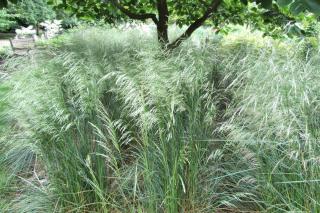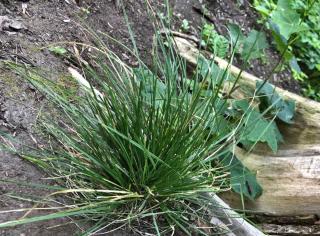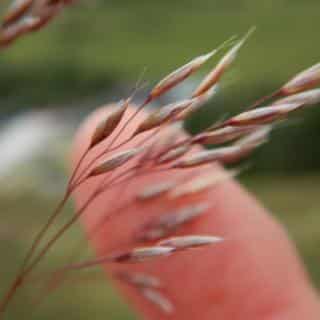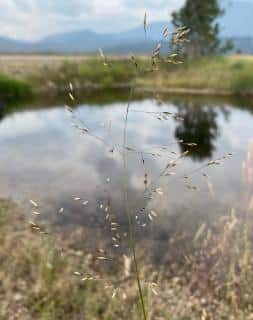

Tufted hairgrass does just that – it brings on images of long-haired fairies waving their tufts in the wind! Deschampsia cespitosa grows easily, too.
Botanical name – Deschampsia cespitosa
Common name – tufted hairgrass
Family – Poaceae
Type – landscaping grasses
Bearing – arching upright mound
Height – 20 to 40 inches (50 to 100 cm)
Planting density – 3 to 4 plants per sq. yard (m²)
Exposure – sunny or partly sunny
Soil – any type, cool
Flowering – June to August
Deschampsia cespitosa is an outstanding grass which bears tufty flowers and then seed pods that seem to float in thin air. When planted together with other grasses, or even simply as a standalone, it will definitely upgrade your garden as seasons come and go.
 Tufted hairgrass does very well in all types of soil, particularly in moist and cool terrain. Make sure you don’t settle it in a spot that often shows signs of dryness or drought. Before planting, amend the soil with either compost or fresh soil mix, and place 3 to 4 clumps of your Deschampsia cespitosa per square yard or meter. This plant can easily be grown in pot or garden box. If you do this, though, make sure you’re diligent about watering.
Tufted hairgrass does very well in all types of soil, particularly in moist and cool terrain. Make sure you don’t settle it in a spot that often shows signs of dryness or drought. Before planting, amend the soil with either compost or fresh soil mix, and place 3 to 4 clumps of your Deschampsia cespitosa per square yard or meter. This plant can easily be grown in pot or garden box. If you do this, though, make sure you’re diligent about watering.
The principal advantage of grasses is that they only require minimal care.
Deschampsia cespitosa of course follows this rule, and the only maintenance you’ll ever have to perform is to cut the clump back at the end of February or beginning of March to remove dead, dried-out fronds. For container growing, an additional step is to add fertilizer at the start of Spring, and to schedule a proper repotting every 3 to 4 years, depending on the size of the pot. As a rule of thumb, if you check the drainage holes underneath and notice roots growing out, it’s time to repot. A solution to help keep the soil moist is to spread a layer of mulch atop the soil.
A naturally very resistant plant, Deschampsia cespitosa won’t suffer from any disease.
However, it’s a “feeding host” for insects that carry diseases dangerous to other plants. For instance, Xylella fastidiosa is a bacteria carried by the lined spittlebug, which feeds on hairgrass among others – it then hops over to more vulnerable species like olive trees.
As for many species of grasses, Deschampsia will cope very well with clump division:
 Other ways to propagate this hairgrass:
Other ways to propagate this hairgrass:
All the steps described above are best performed in Fall; and, if not Fall, then in Spring – but propagating this grass in Spring means committing to watering well over the following Summer.
 Tufted hairgrass is a very versatile plant:
Tufted hairgrass is a very versatile plant:
As a standalone in the midst of a growing bed, you’ll benefit from the best of what the plant can offer; you can also plant it in clusters, and it will then form fabulous vapor-like clouds when it blooms. The impact will be even greater if the backdrop of the flower bed is darker.
A lover of shade and moisture, a garden box will grow lush if you plant a few specimens of Deschampsia cespitosa on your terrace.
Alternate with blue fescue and Imperata cylindrica – the ‘Red Baron‘ variety is particularly nice – to create even-sized clumps of color.
Rather than throw the dried stems away, spread them around and use them as a natural – and cheap! – mulch.